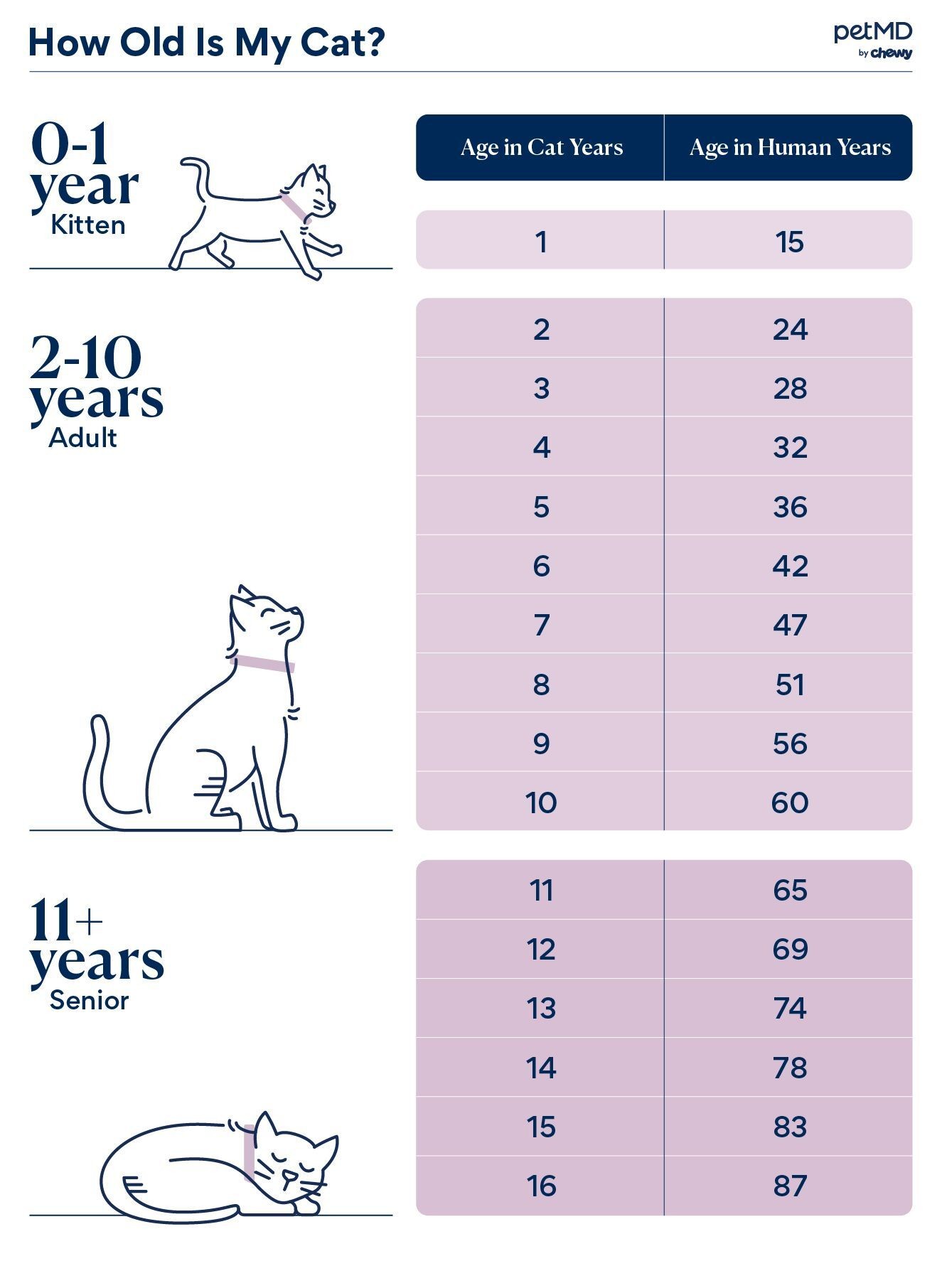Understanding how your cat ages compared to humans can help you provide the best care for your feline friend. While a simple multiplication doesn’t accurately reflect the aging process, there’s a generally accepted conversion to help you understand your cat’s age in human years.
 A infographic chart detailing the age conversion of a cat
A infographic chart detailing the age conversion of a cat
Converting cat years to human years allows for a better comparison of their aging process to our own. This helps us understand the physical changes and potential health issues they may experience as they get older. For instance, a senior cat might experience mobility issues similar to a human in their later years.
Cat Years to Human Years: Conversion Chart
According to the American Veterinary Medical Association (AVMA), a cat’s first year equates to 15 human years. By their second birthday, they’ve reached the equivalent of 24 human years. After that, each cat year is roughly equivalent to four human years.
Here’s a simple chart to help you convert your cat’s age:
| Cat Age | Human Age |
|---|---|
| 1 year | 15 years |
| 2 years | 24 years |
| 3 years | 28 years |
| 4 years | 32 years |
| 5 years | 36 years |
| … | … |
Why Cat Years Don’t Equal Seven Human Years
The common misconception of multiplying a cat’s age by seven is inaccurate. Cats mature much faster in their initial years. This faster initial development is why a one-year-old cat is considered a teenager in human years.
Determining Your Cat’s Age: What if You Don’t Know Their Birthday?
If you’ve adopted a cat, determining their exact age can be challenging. Thankfully, veterinarians can estimate age based on several factors, including:
- Teeth: Examining the condition of your cat’s teeth, including wear and tartar buildup, can provide clues about their age.
- Muscle Tone: Younger cats generally have more muscle mass and definition than older cats.
- Coat: Changes in coat texture and the presence of gray hairs can indicate aging.
- Eye Condition: Cloudiness or changes in the lens can suggest an older cat.
How Long Do Cats Live?
The average lifespan for a cat is between 12 to 15 years, with crossbred cats often living slightly longer than purebreds. Advancements in veterinary care and improved nutrition contribute to longer lifespans for our feline companions. Understanding your cat’s age in human years allows you to provide appropriate care at each life stage, ensuring they live a long, healthy, and happy life.
Knowing your cat’s age in human years is more than just a fun fact; it’s a valuable tool for understanding their needs and providing the best possible care. By recognizing the nuances of cat aging, you can strengthen your bond and enjoy many happy years together.
